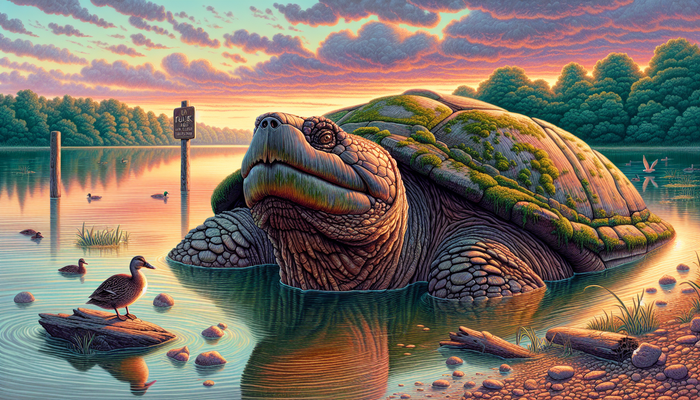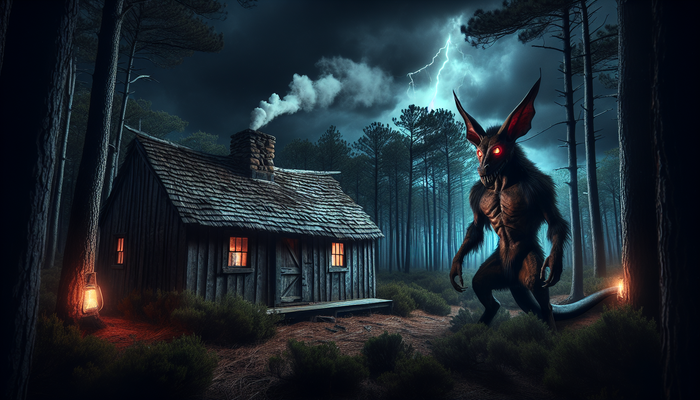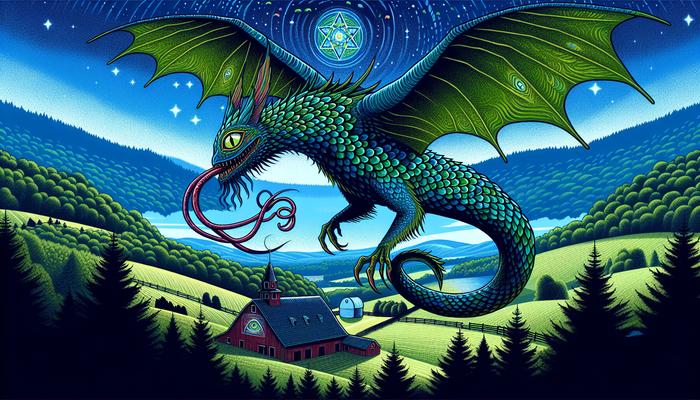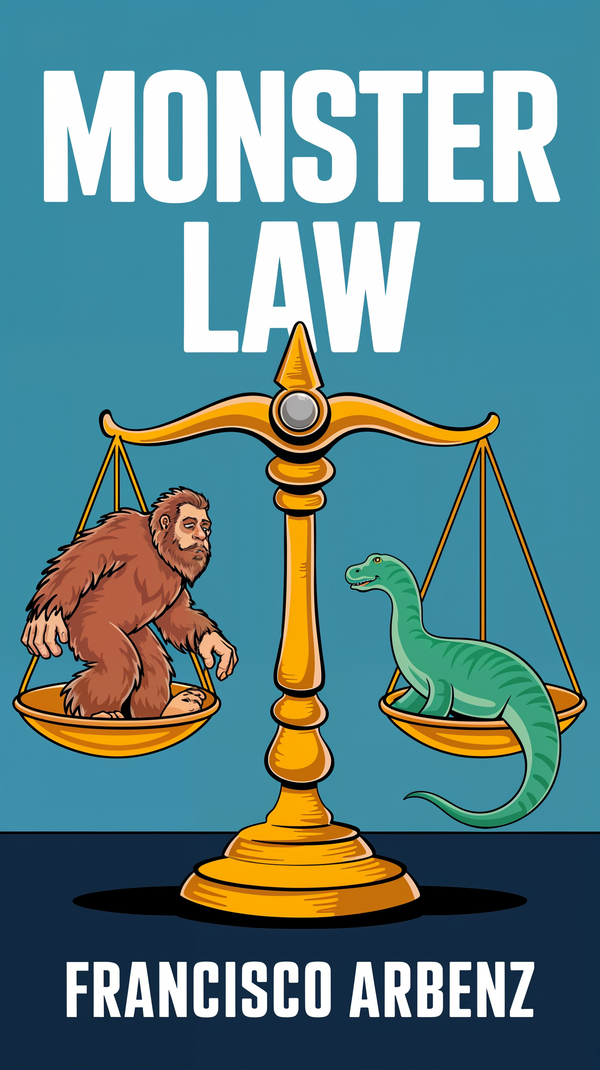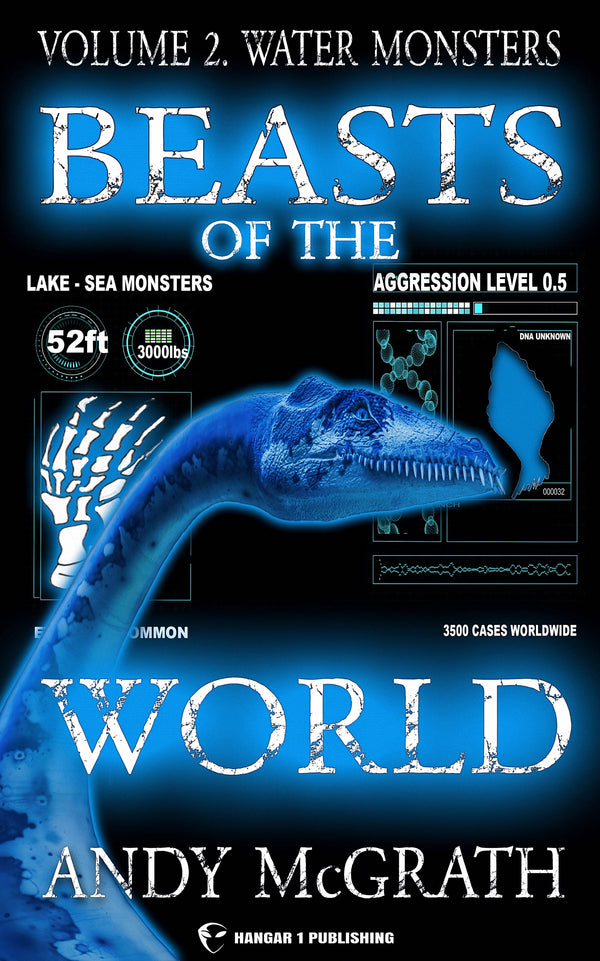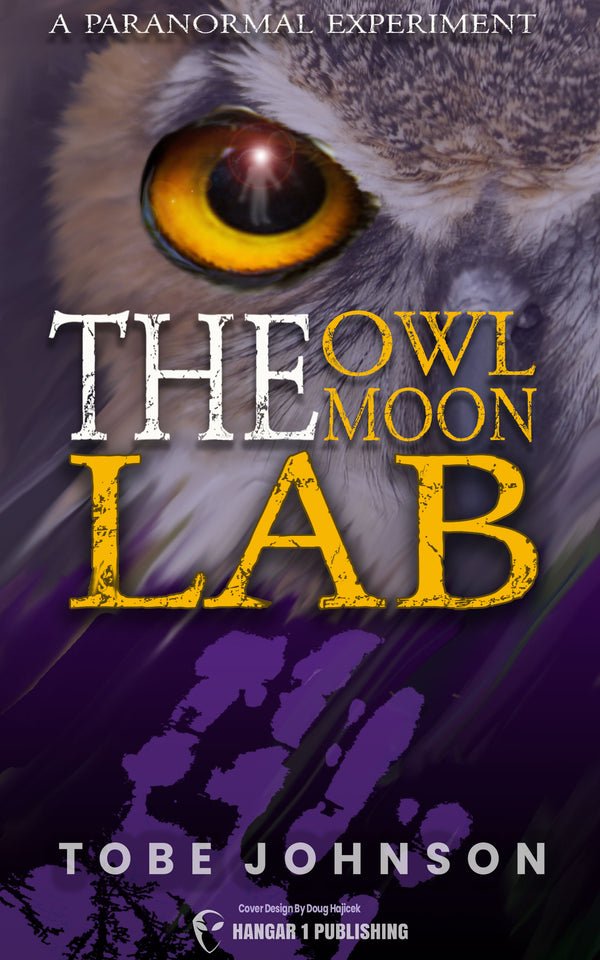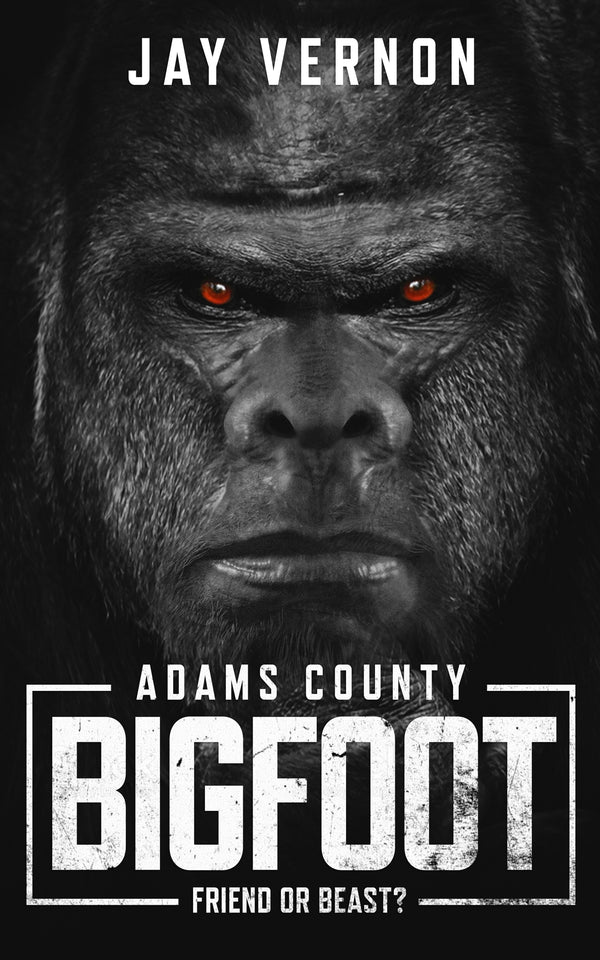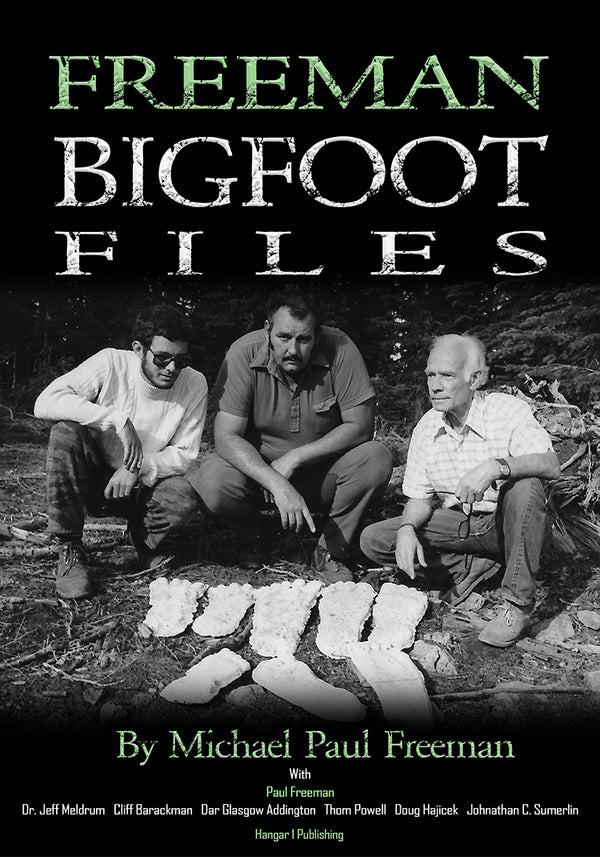Exploring Bigfoot and the Media: Fact vs. Fiction
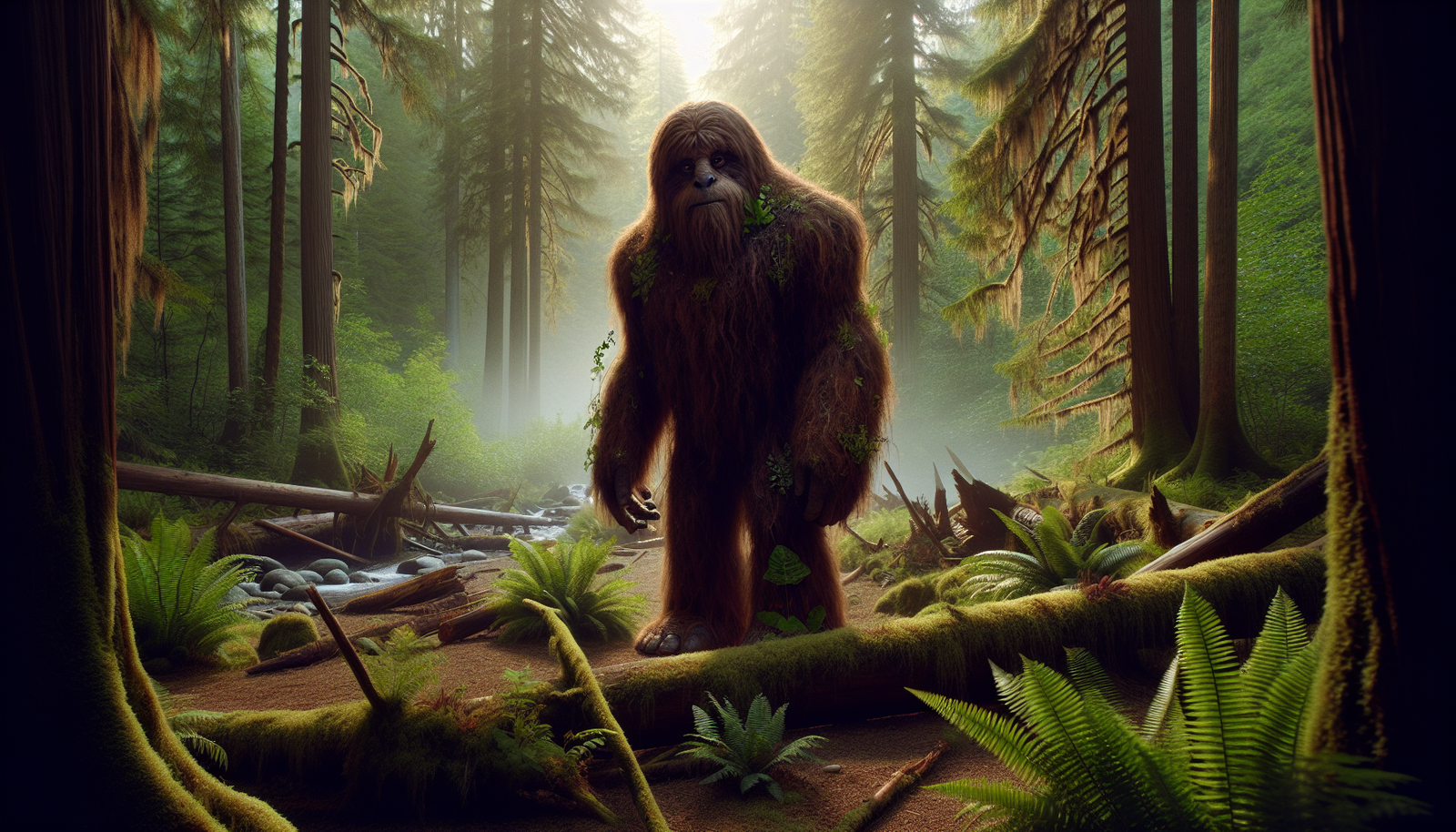
By Oliver Bennett, Cryptozoologist
In the misty forests of North America, a legend looms large. Bigfoot, the elusive giant said to roam the wilderness, has captured our collective imagination for decades. This mythical creature, also known as Sasquatch, has become more than just a tale told around campfires. It's a cultural phenomenon that has left an indelible mark on our media landscape, blurring the lines between fact and fiction.
The story of Bigfoot is a tapestry woven from threads of indigenous lore, media sensationalism, and our innate human fascination with the unknown. It's a tale that has evolved from whispered legends to headline news, from grainy footage to prime-time television. But how did this creature of the shadows step into the spotlight of popular culture? And what does our enduring fascination with Bigfoot say about us?
The Indigenous Roots of Bigfoot
The roots of the Bigfoot legend run deep, intertwining with the rich folklore of indigenous peoples across North America. Long before the term "Bigfoot" entered our lexicon, Native American tribes shared stories of wild, hairy humanoids dwelling in the forests. These creatures went by many names - Sasquatch, Ts'emekwes, Bukwus - each with its own unique characteristics and cultural significance.
For the Lummi people of the Pacific Northwest, the Ts'emekwes were a race of giants who lived in the mountains, occasionally venturing down to steal salmon from fishing nets. The Kwakiutl tribe spoke of the Bukwus, a wild man of the woods associated with ghosts and drowning. These beings weren't mere monsters; they were integral parts of a complex mythology that explained the natural world and human nature.
The Salish people gave us the term "Sasquatch," derived from their word "Sasq'ets," meaning "wild man." This name would later evolve into the more familiar "Bigfoot," but its indigenous roots remind us that the concept of a mysterious forest dweller is far older than modern media portrayals might suggest.
These traditional stories served multiple purposes within their respective cultures. They were cautionary tales, keeping children from wandering too far into the dangerous wilderness. They were also expressions of respect for nature's mysteries and the untamed wild. The creatures in these legends often possessed supernatural abilities, blurring the line between the physical and spiritual worlds.
The Birth of Modern Bigfoot
But how did these diverse tribal legends transform into the unified concept of Bigfoot we know today? The answer lies in a perfect storm of media attention, public fascination, and a dash of mischief that occurred in the mid-20th century.
The Bluff Creek Incident
The year was 1958, and the sleepy town of Bluff Creek, California, was about to become the epicenter of a phenomenon. It all started with a simple newspaper article in the Humboldt Times. The headline read: "Giant footprints puzzle residents," and it detailed the discovery of enormous, humanoid footprints found by a road construction crew.
The article, penned by journalist Andrew Genzoli, introduced the term "Bigfoot" to the public lexicon. Genzoli's piece was tongue-in-cheek, suggesting with a wink that perhaps the area had its own "Abominable Snowman." Little did he know that his playful reporting would ignite a firestorm of interest that would burn for decades to come.
The footprints, as it turned out, were a prank orchestrated by Ray Wallace, a local logger with a penchant for practical jokes. Wallace had used large wooden feet to create the impressions, a fact that wouldn't come to light until after his death in 2002. But by then, it was too late. The seed of the modern Bigfoot myth had been planted, and it was about to grow into something far bigger than Wallace could have imagined.
Media Frenzy and Public Fascination
The Humboldt Times article struck a chord with the public. In an era of rapid technological advancement and urban expansion, the idea of an undiscovered creature lurking in the wilderness held a powerful appeal. It tapped into a collective nostalgia for the frontier days and a desire for mystery in an increasingly explained world.
Media outlets across the country picked up the story, each adding their own spin and speculation. The legend of Bigfoot began to take shape, absorbing elements from various folkloric traditions and contemporary fears. The creature was described as tall, hairy, and humanoid, walking upright like a man but possessing the strength and wildness of a beast.
This media frenzy had a snowball effect. As more people became aware of Bigfoot, more sightings were reported. Each new account added to the mythos, creating a feedback loop of fascination and speculation. The line between fact and fiction began to blur, with eyewitness testimonies, footprint casts, and grainy photographs all contributing to a growing body of "evidence."
The Patterson-Gimlin Film: A Turning Point
The Bigfoot phenomenon reached a fever pitch in 1967 with the release of what would become the most famous piece of Bigfoot "evidence" to date: the Patterson-Gimlin film. This short piece of footage, captured by Roger Patterson and Bob Gimlin in Bluff Creek, California, purportedly shows a large, hairy, bipedal creature striding across a clearing before disappearing into the woods.
The film, despite its poor quality, or perhaps because of it, became an instant sensation. It presented the public with a tantalizing glimpse of what Bigfoot might look like in motion. The creature in the film, affectionately dubbed "Patty" by Bigfoot enthusiasts, displayed a gait and body structure that many claimed could not be easily replicated by a human in a costume.
The impact of the Patterson-Gimlin film on Bigfoot lore cannot be overstated. It provided a visual reference point for the creature, shaping public perception and influencing countless depictions in popular media. The image of a large, hair-covered being walking with a distinctive gait became the definitive representation of Bigfoot in the public imagination.
However, the film also became a lightning rod for controversy. Skeptics argued that it was an elaborate hoax, pointing out inconsistencies and claiming that the creature was simply a man in a suit. Believers, on the other hand, saw the film as compelling evidence of Bigfoot's existence, analyzing every frame for clues about the creature's anatomy and behavior.
The debate over the Patterson-Gimlin film's authenticity rages on to this day, more than half a century after it was shot. It has been subjected to countless analyses, with experts in fields ranging from biology to special effects weighing in on its veracity. The film's enduring mystery has kept it at the center of Bigfoot discourse, ensuring that the creature remains a topic of fascination and debate.
Bigfoot in Popular Culture
The Patterson-Gimlin film marked a turning point in the Bigfoot phenomenon. It transformed Bigfoot from a local legend into a national obsession, catapulting the creature into the mainstream of American popular culture. In the years that followed, Bigfoot would stomp its way through every conceivable form of media, from serious documentaries to campy B-movies.
Bigfoot on the Big Screen
In the world of cinema, Bigfoot has played many roles. The creature has been portrayed as everything from a terrifying monster to a misunderstood gentle giant. Films like "The Legend of Boggy Creek" (1972) tapped into the horror potential of the Bigfoot myth, presenting the creature as a mysterious and threatening presence lurking in the wilderness. This pseudo-documentary style film, which blended real interviews with recreated encounters, helped to cement the idea of Bigfoot as a subject worthy of serious investigation.
On the other end of the spectrum, family-friendly fare like "Harry and the Hendersons" (1987) presented a more sympathetic view of the creature. In this film, Bigfoot is depicted as a lovable, if somewhat clumsy, being who becomes part of a suburban family. This portrayal resonated with audiences, suggesting that perhaps the "monster" in our midst was more like us than we might have imagined.
Bigfoot on Television
Television has also played a significant role in shaping the public perception of Bigfoot. Documentary-style shows like "In Search Of..." in the 1970s presented the Bigfoot phenomenon alongside other mysterious topics, lending it a veneer of credibility. More recently, reality TV has embraced the Bigfoot craze with shows like "Finding Bigfoot" and "Mountain Monsters." These programs, while often sensationalized, have kept the idea of Bigfoot alive in the public consciousness and have even inspired a new generation of amateur Bigfoot hunters.
The influence of these media portrayals on the Bigfoot phenomenon cannot be overstated. Each new film or TV show adds to the cultural mythology surrounding the creature, influencing how people think about and look for evidence of its existence. Interestingly, there's often a correlation between the release of popular Bigfoot-themed media and an uptick in reported sightings, suggesting a complex interplay between media representation and public perception.
Bigfoot in Literature and Advertising
In the realm of literature, Bigfoot has inspired works ranging from serious scientific inquiry to pulp fiction. Authors like John Green and Grover Krantz have approached the subject with academic rigor, compiling and analyzing reports of sightings and physical evidence. Their works, such as Green's "Sasquatch: The Apes Among Us" and Krantz's "Big Footprints: A Scientific Inquiry Into the Reality of Sasquatch," have become foundational texts in the field of Bigfoot research.
On the other hand, novelists have found in Bigfoot a rich source of material for fiction. The creature has appeared in countless novels and short stories, often serving as a metaphor for the conflict between civilization and wilderness, or as a symbol of the unknown lurking just beyond the edges of our understanding.
Perhaps one of the most surprising arenas where Bigfoot has made its mark is in advertising. The creature's recognizable silhouette and association with the great outdoors have made it an attractive mascot for various products. One of the most notable examples is the "Messin' with Sasquatch" campaign by Jack Link's Beef Jerky, which features a series of commercials where campers play pranks on an unsuspecting Bigfoot.
This commercialization of Bigfoot speaks to the creature's status as a cultural icon. It has transcended its origins as a cryptozoological mystery to become a marketable brand, recognizable even to those who may not believe in its existence. This widespread recognition has further embedded Bigfoot in popular culture, ensuring its continued relevance in the public imagination.
Bigfoot in the Digital Age
The advent of social media and user-generated content has ushered in a new era for Bigfoot enthusiasts and skeptics alike. Platforms like YouTube, Facebook, and Twitter have become breeding grounds for Bigfoot-related content, from alleged sighting videos to in-depth analysis and debate.
The Impact of Social Media
One of the most significant impacts of social media on Bigfoot culture has been the democratization of information sharing. In the past, Bigfoot sightings might have been reported to local newspapers or shared among small groups of enthusiasts. Now, anyone with a smartphone can instantly share their experience with a global audience. This has led to an explosion of Bigfoot-related content online, ranging from compelling footage to obvious hoaxes.
The viral nature of social media has also changed the way Bigfoot stories spread. A video claiming to show Bigfoot can rack up millions of views in a matter of days, sparking widespread discussion and analysis. This rapid dissemination of information has both positive and negative effects on the Bigfoot phenomenon.
On one hand, it allows for quick sharing of potentially important evidence and facilitates communication between researchers and enthusiasts around the world. On the other hand, it also provides a platform for hoaxes and misinformation to spread rapidly, muddying the waters of serious Bigfoot research.
The Colorado Bigfoot Video: A Case Study
A recent example of this phenomenon occurred in October 2023, when a video purportedly showing a Bigfoot in Colorado went viral on social media. The footage, captured by a couple on a scenic train ride, showed a dark, bipedal figure moving through a clearing. The video sparked intense debate online, with believers hailing it as compelling evidence and skeptics pointing out inconsistencies or suggesting alternative explanations.
This incident highlights the double-edged sword of social media in relation to Bigfoot. While it allowed for widespread sharing and discussion of the footage, it also demonstrated how quickly misinformation can spread. Within days, theories and counter-theories had proliferated across various platforms, making it difficult to separate fact from speculation.
The Challenge of Digital Evidence
The role of social media in Bigfoot culture raises important questions about the nature of evidence in the digital age. With sophisticated video editing software readily available, it's becoming increasingly difficult to distinguish genuine footage from clever hoaxes. This has led to a growing emphasis on provenance and context in evaluating Bigfoot evidence, with researchers placing greater importance on the credibility of witnesses and the circumstances surrounding alleged encounters.
The Scientific Perspective on Bigfoot
Despite the enduring popularity of Bigfoot in popular culture, the scientific community remains largely skeptical of the creature's existence. The lack of concrete physical evidence - no bodies, no fossils, no definitive DNA - has led most scientists to conclude that Bigfoot is more likely a product of misidentification, folklore, and hoaxes rather than an undiscovered species.
The Evolutionary Puzzle
One of the primary challenges faced by those who believe in Bigfoot's existence is the lack of a clear evolutionary lineage. For Bigfoot to exist as described - a large, bipedal primate native to North America - it would require a significant and previously unknown branch of primate evolution on the continent. The fossil record, however, shows no evidence of large primates in North America in recent geological history.
Proponents of Bigfoot's existence have proposed various theories to explain this lack of physical evidence. Some suggest that Bigfoot could be a relict population of an extinct species like Gigantopithecus, a large ape that lived in Asia until about 100,000 years ago. Others propose that Bigfoot might have supernatural abilities that allow it to avoid detection. However, these theories remain speculative and lack scientific support.
Evaluating Bigfoot Evidence
When it comes to Bigfoot evidence, much of what is presented falls into the category of eyewitness accounts, footprint casts, and blurry photographs or videos. While these can be compelling to believers, they fall short of the rigorous standards required for scientific proof.
- Eyewitness Accounts: While often sincere, are notoriously unreliable. Human perception is easily influenced by expectations, environmental conditions, and the fallibility of memory.
- Footprint Casts: Often touted as physical evidence, present their own set of challenges. While some casts show intriguing details, skeptics argue that they could be the result of hoaxes or misidentified tracks from known animals.
- Photographic and Video Evidence: Including the famous Patterson-Gimlin film, has been subjected to intense scrutiny. With the advent of digital technology, the potential for hoaxes and manipulated footage has increased dramatically.
Scientific Studies on Bigfoot
Several scientific studies have attempted to analyze alleged Bigfoot evidence:
- In 2014, a genetic study led by Oxford University and the Lausanne Museum of Zoology examined 30 hair samples claimed to be from Bigfoot or similar creatures. The results found that all of the samples came from known animals such as bears, wolves, cows, and raccoons.
- In 1977, the FBI analyzed alleged Bigfoot hair samples at the request of the Bigfoot Information Center. The results, which were declassified in 2019, revealed that the hairs were of deer family origin.
These studies highlight a common pattern in Bigfoot research: when subjected to rigorous scientific analysis, alleged evidence often turns out to have mundane explanations. This pattern has led many scientists to conclude that the pursuit of Bigfoot is more akin to folklore than zoology.
The Psychology of Belief
Despite the lack of scientific evidence, belief in Bigfoot remains strong among a significant portion of the population. This raises an interesting question: why do people continue to believe in Bigfoot in the face of scientific skepticism?
The answer lies in the complex interplay of psychology, culture, and human nature. Belief in Bigfoot, like belief in other cryptids or paranormal phenomena, can serve various psychological functions.
The Appeal of Mystery
For some, Bigfoot represents a connection to a wilder, more mysterious world. In an age where much of the planet has been mapped and explored, the idea of an undiscovered creature roaming the wilderness holds a powerful appeal. It speaks to a desire for mystery and the unknown in an increasingly explained world.
Confirmation Bias
The concept of confirmation bias plays a significant role in sustaining belief in Bigfoot. This psychological phenomenon leads people to seek out information that confirms their existing beliefs while disregarding contradictory evidence. For Bigfoot believers, this might mean interpreting ambiguous sounds in the forest as Bigfoot calls or seeing a large, dark shape in a blurry photograph as proof of the creature's existence.
Community and Identity
Moreover, the community aspect of Bigfoot culture shouldn't be underestimated. For many enthusiasts, the search for Bigfoot is as much about the camaraderie and shared experience as it is about finding the creature itself. Bigfoot conventions, expeditions, and online forums provide a sense of belonging and purpose that can be deeply fulfilling.
Bigfoot as a Cultural Symbol
The enduring legend of Bigfoot speaks to something fundamental in the human psyche. It represents the tension between our rational, scientific understanding of the world and our innate desire for mystery and wonder. In many ways, Bigfoot serves as a modern-day myth, fulfilling similar cultural functions to the legends and folktales of earlier societies.
A Symbol of Wilderness
Bigfoot has become a powerful symbol in American culture. It represents the wild, untamed aspects of nature that still exist despite our best efforts to catalog and control the natural world. In this sense, Bigfoot embodies a kind of freedom - a creature unfettered by the constraints of civilization, living by its own rules in the depths of the forest.
Environmental Mascot
This symbolism has led to some unexpected connections. In recent years, Bigfoot has been adopted as an unofficial mascot by some environmental and conservation movements. The reasoning goes that if we need to preserve enough wilderness to hide an eight-foot-tall ape, we'll end up protecting countless other species in the process. Whether or not Bigfoot exists, the idea of it can serve as a compelling argument for habitat preservation.
Economic Impact
The cultural impact of Bigfoot extends beyond environmental concerns. The creature has become a staple of regional tourism in areas known for sightings, with Bigfoot-themed museums, festivals, and tours drawing curious visitors. This economic aspect of the Bigfoot phenomenon demonstrates how deeply the legend has embedded itself in local cultures.
The Future of Bigfoot
As we look to the future, it's clear that Bigfoot will continue to evolve as a cultural icon. The advent of new technologies, particularly in the realm of digital media, is likely to shape how we engage with the Bigfoot myth in the coming years.
Technological Advancements
Virtual and augmented reality technologies could offer new ways to experience Bigfoot encounters, blurring the lines between fact and fiction even further. We might see interactive Bigfoot hunts or immersive experiences that allow people to "encounter" the creature in a controlled environment.
At the same time, advances in genetic technology and environmental DNA sampling could potentially provide new avenues for Bigfoot research. While current studies have failed to find evidence of an unknown primate species, future technologies might be able to detect even the faintest traces of Bigfoot's presence - if, of course, it exists.
Conclusion
The story of Bigfoot is more than just a tale of a mysterious creature in the woods. It's a mirror that reflects our relationship with the natural world, our appetite for mystery, and our capacity for belief. Whether seen as a flesh-and-blood animal, a cultural metaphor, or something in between, Bigfoot continues to capture our imagination and challenge our understanding of the world around us.
As we navigate the complex interplay between fact and fiction in the Bigfoot phenomenon, we're reminded of the power of storytelling and the enduring human desire to believe in something greater than ourselves. In the end, perhaps the true value of the Bigfoot legend lies not in proving or disproving its existence, but in the questions it prompts us to ask about our place in the natural world and the limits of our knowledge.
The search for Bigfoot, much like the creature itself, seems destined to continue roaming the frontiers of our imagination, leaving behind a trail of footprints that lead us ever deeper into the uncharted territories of belief, science, and the human experience.
From Bigfoot to UFOs: Hangar 1 Publishing Has You Covered!
Explore Untold Stories: Venture into the world of UFOs, cryptids, Bigfoot, and beyond. Every story is a journey into the extraordinary.
Immersive Book Technology: Experience real videos, sights, and sounds within our books. Its not just reading; its an adventure.


